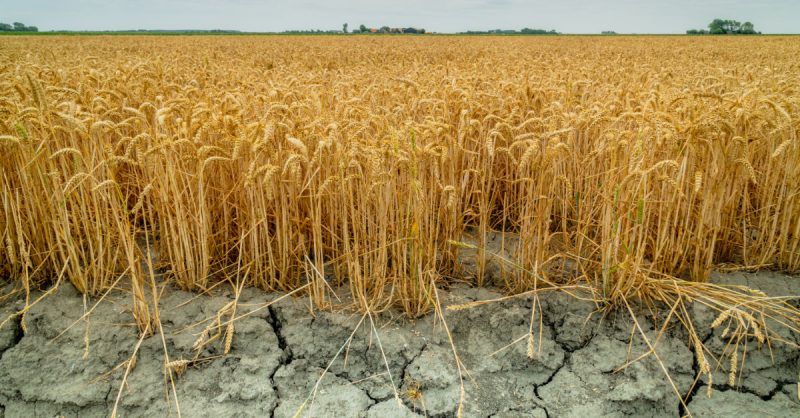Oklahoma has been experiencing rough drought conditions for the last two years, which has had a significant impact on the economy and the budgets of the state and municipal governments.
What’s worse is that the drought map has gone from yellow to dark red over the course of the last several weeks and months, signifying a more severe drought to come.
According to the U.S. Drought Monitor, drought conditions exist in some capacity over the whole state. The two worst categories of drought, extreme and exceptional, increased from 47 percent in August to 64 percent at the end of September.
What’s the History of Drought in Oklahoma?
In 2000, the U.S. Drought Monitor was established. Since 2000, Oklahoma has had four droughts, the longest of which lasted 239 weeks from November 2, 2010, to May 26, 2015. The week of October 4, 2011, marked the height of the drought (denoted as D4), which impacted 69.82 percent of Oklahoma’s territory.
Researchers at Oklahoma State University estimate that the 2011 and 2012 drought cost Oklahoma $2 billion.
The greatest drought since 1956 is also affecting other states, according to information from the National Oceanic and Atmospheric Administration. In agricultural regions like Oklahoma, where the history and memories of the Dust Bowl of the 1930s still remain, the impacts of the drought are particularly severe.
The drought of 2010/2011 started in the autumn of 2010 and continued into the summer of 2011. According to statistics from the U.S. Drought Monitor, the current drought began to affect Oklahoma in the early summer and has now spread to practically the whole state, with “extreme” or “exceptional” drought conditions.
How is the Drought Affecting Farming?
In its most recent crop development report, the USDA gave Oklahoma pasture conditions a 72 percent poor to very poor rating. According to the same data, Oklahoma’s winter wheat planting was just 28 percent finished last week, far less than the previous five-year average of 41 percent.
Due to the dry circumstances, planted wheat may not germinate or survive at all. This fall’s chances of grazing on winter wheat look slim at best. There are many different hay varieties on the market, yet supplies of hay are limited due to the dry conditions. Soybeans and other failed summer crops are among those being baled for hay to help meet the demand.
All hay should be examined since many crops have a significant risk of nitrate contamination. Through the end of the year, the Oklahoma Cooperative Extension Service (OCES) is providing discounted testing fees for nitrates, basic fodder (quality), and animal water. For help in sampling and testing forage and water, get in touch with the county extension office in your area.
Is Oklahoma’s 2022 Drought Getting Worse?
With winter drawing near, Oklahoma’s drought condition is becoming worse. According to the Drought Monitor, 99.97 percent of the state is experiencing drought (D0-D4), with 75.77 percent of that area experiencing extreme or exceptional drought (D3 or D4).
The Drought Severity and Coverage Index (DSCI), which ranges from 0 to 500, provides an overview of the drought conditions in the Drought Monitor. Oklahoma presently has the highest DSCI of any state in the US, up from 93 in mid-June to 393 in the most recent weekly Drought Monitor.
In Oklahoma, the DSCI has not been this high since February 2013. The last 120 days, according to the Oklahoma Mesonet system, have been the driest for the same time period since records began in 1921.
What’s the Future Water Situation for Oklahomans?
For many growers, the water issue may soon be more urgent than forage. Water availability and quality are both poor and declining quickly. Surface water ponds that are filled by spring and summer rains are frequently used in Oklahoma. Even in a typical year, ponds seldom get restored in the winter.
The amount of livestock auctions clearly reflects the effects of the drought. Since July 1, the quantity of feeder cattle sold in Oklahoma auctions has increased by 19 percent year-over-year, with the number over the last two weeks increasing by about 28 percent.
Since July, the number of cows destined for the cull has increased by 112 percent and in the past two weeks it has increased by 150 percent. Producers are still being forced to sell feeder cattle early and cull more cows due to the ongoing drought.
What Are Climatologists & Researchers Saying?
According to state climatologist Gary McManus, September of last year was the driest since 1956. The worst drought has reached levels not seen since the beginning of 2013. According to him, a few things have made this specific drought worse.
The drought Oklahomans are experiencing is really two droughts together, according to McManus, who says the present scenario resulted from the combination of the drought that began in August 2021 and the flash drought that worsened the circumstances that started in the second week of June in 2022.
Currently, the southern United States is more likely to experience drought because of the La Niña weather trend.
“So, we’re in our third year of La Niña out in the equatorial pacific waters. That cooling of the oceanic waters can often lead to warmer and dryer than normal conditions across the southern United States and Oklahoma can get caught up in that climate signal. That’s certainly helped spur the drought forward over the last two years,” McManus said. “This is certainly right up there with all those years of that 2010-15 drought. The difference is it’s just so far one year.”
Oklahoma State University Extension is stepping in to assist alleviate some of the financial stress being experienced by farmers and ranchers throughout Oklahoma as they cope with the effects of the 2022 drought.
The OSU Soil, Water and Forage Analytical Laboratory is providing discounted rates for nitrate toxicity, forage and feed testing, and animal water testing from October 5 through December 31.
Due to the drought and rising prices for other agricultural inputs needed for profitable farming and ranching, farmers now have to pay more to maintain their businesses.









